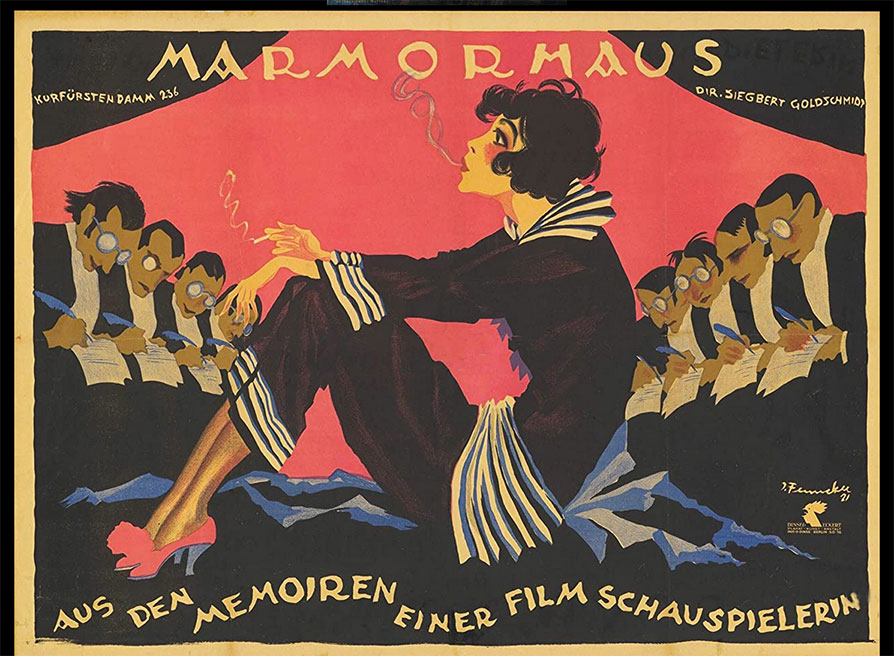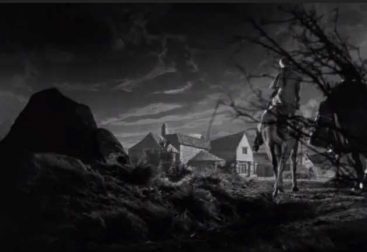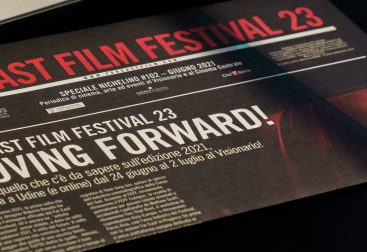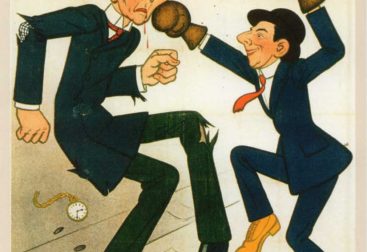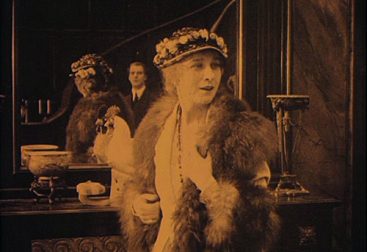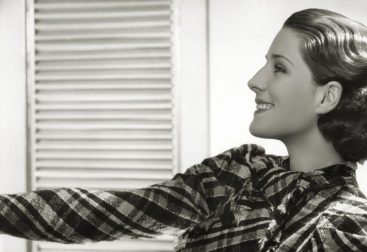Preliminary remark: This text was mostly written in the course of 2021. Many references to the entries refer to this, e.g. B on filmportal.de etc. In the meantime, the level of information regarding Fanny Carlsen has changed fundamentally. The following text explains how this happened.
I probably first became aware of Fanny Carlsen when I was studying Jacques Feyder’s films a long time ago.
Fanny Carlsen wrote together with Willy Haas the screenplay for the film “Thérèse Raquin”, which is believed to have been lost – Fanny Carlsen also seemed to have been lost. Her fate after 1933 is apparently not known. It was disturbing for me to read where and how the copies of this film disappeared or were destroyed on purpose. From an edition of the Anthologie du Cinéma, 2nd volume, which I had bought while I was a student in France, I had remained for a long time at the level of information that Francis Lacassin gave there: a 16mm copy would exist in the film club in Rio de Janeiro. That was in the 1960s – when I saw some of the films from the “Exil” retrospective in Berlin 1983, I read that on the one hand the film was meanwhile considered lost and on the other hand Wolfgang Zilzer’s verdict on it: “Who of you saw this film, don’t forget it.”
At the latest when we showed “Die Weber” by Friedrich Zelnik at the Karlsruhe Silent Film Festival – an adaptation of Hauptmann’s drama that is still considered unsurpassed today – I was again confronted with Fanny Carlsen and her unclear fate, which began to bother me. I’m a curious person and I like to solve mysteries. The more enigmatic they appear to me, the more intensively I can deal with them.
The entry on filmportal.de caused me to inquire during a stay in Berlin in the Deutsche Kinemathek whether it would be possible to see the unpublished work by Gabriele Hansch/Gerlinde Waz “Filmpionierinnen in Deutschland. A contribution to film history”, Berlin 1998, to which the entry on filmportal.de refers. Unfortunately that was not possible.
I wondered how I could track down Fanny Carlsen? All tools which are used for film studies or to research film history did not get me any further. I also assumed that these tools had certainly already been used by the two authors mentioned in their research, and that no clues could be found in this way.
In fact, after doing my own research, I know that it is as I thought it would be. I was able to see some of the scripts written by Fanny Carlsen in November 2021. What struck me was that the scripts I was able to review always said “F. Carlsen” as the author, or the attribution was even missing completely. That should also be the case with the screenplay for “Thérèse Raquin”, which I couldn’t see myself because of its bad condition. I was only told this by an employee of the SDK.
Unfortunately, it must also be pointed out in this context that Willy Haas does not mention Fanny Carlsen’s collaboration on several screenplays (see the revised filmography, which will be published in a future article) in his autobiography “The literary World Memoirs” (OT:: Die literarische Welt Lebenserinnerungen). Willy Haas writes:
“I first wrote the scenario for a film, “The Burning Field”. Then many other films – probably almost twenty in all. I wrote the film version of Zola’s “Thérèse Raquin” for the French* Jacques Feyder and of Gerhard Hauptmann’s “Die Weber” for the director Zelnik. I wrote “The Schellenberg Brothers” based on Bernhard Kellermann for the director Grune, in which Conrad Veidt played the two main roles in a very excellent and technically amazing way.” (Paperback edition, Frankfurt, Fischer Verlag, 1983, p. 88)
* Jacques Feyder was not French but Belgian (JJ).
A comment seems superfluous to me. Willy Haas eliminated a screenwriter who could no longer defend herself from film history.
Research into the screenplays had yielded no indication of Fanny Carlsen’s identity or biography. I had to take a fundamentally different approach and asked myself what kind of person Fanny Carlsen might have been. I kept the few facts I knew in mind: Fanny Carlsen only wrote screenplays, but about 50 of them. Apparently she never directed, she never appeared anywhere as an actress and was also not active in any other field of artistic or commercial film production. Photos of her are unknown. Did she shy away from the public and the red carpet of film premieres? Nothing is known about her private life either.
If she only wrote screenplays, then I wondered whether she might have written other texts and at all. It would therefore not be necessary to look for it in the cinematic area, but in the source works of literary studies. If I had had as much time as a student at an university, I would have systematically searched through all relevant reference works on the first two decades of the 20th century to find any of her publications.
Since that wasn’t the case, I almost relied on chance, which actually came to my rescue one day. On one of the best-known online platforms for antiquarian books, I found two publications by Frank Carlsen, who obviously didn’t always call himself that.
The titles of the two books are “The Marriage of Mr. Terbrügge” (OT: Die Ehe des Herrnn Terbrpgge) (here: Frank Carlsen) and “War Wedding and Other Field Gray Stories” (OT: Kriegstrauung und andere feldgraue Geschichen). The cover reads ‘By Fan (Frank Carlsen)’. A thorough online search led me to a blog by collectors of antiquarian books and other sundries where there should be a reference to F. Carlsen. This remote blog www.kunst-und-troedel.info (query on March 28, 2021) is not a platform by and for collectors with a literary background – it’s less about literature and more about collecting as such. However, the member “Buchfink” (translation: Chaffinch) has investigated the author Frank Carlsen more intensively, and we now owe him a crucial clue. He found it in the relatively out-of-the-way 1918 work of Volkish and nationalist literary scholar Adolf Bartels, World Literature 1. German Poetry. I quote the whole passage here:
“Of course, some of the narrators of this time have not yet been established in literary history, and in some cases there is still a lack of more detailed biographical information about them. These include Adolf Arensen, the author of “Colonel Belares and three other stories” (3917), Walter Burk, the author of the “Neighbours’ Children” (5596) E. Langk (i.e. Eugenie Lampel), author of the two novellas “Emelina” and ” How’s it going” (3585), L. Malten (author of “Only a maid” (5150), Erwin Rosenberger with “The Thief King and other stories” (5249) and “1 + 1 = 3″ and other stories” ( 5496) and Karl Zangerle with “Merano Stories” (5391), as well as the following authors of war short stories: Frank Carlsen (fan, actually: Fanny Kahane-Carlsen), M. Friedland, Julius Götz, Else Höffer (author of “The Sin of the Fathers”), Oskar von Hibicki, Oskar Kilian (“Im Felde”, 5742 and 5813), Karl Marilaun, (who also published an “Austrian War Diary”, 5770 and 5890), Karl Lieblich, Ret Marut, Max Zeumer.” P. 411f, loc.cit.; the numbers in brackets refer to the numbers of the texts published by Reclam; Adolf Bartels’ book was also published by Reclam Verlag, Leipzig.
I was electrified. The Jewish address book of the city of Berlin had been on my computer for a long time. Immediately I found a Fanny Kahane there who lived at Wartburgstrasse 14 in Berlin-Schoeneberg. She was entered in the address book of the city of Berlin as a merchant’s widow. I am currently (June 2022) unable to reconstruct why I did not find Fanny Kahane in the Arolsen Archives database.
March 2022:
I followed this lead for a very long time, but now I know that it is obviously wrong. I had to interrupt my research to prepare for the Karlsruhe Silent Film Festival, which took place from January 26th to 30th, 2022. When I resumed my research in early March 2022 and carried out a rather routine internet-wide query, I came across a Wikipedia entry on Fanny Carlsen, to my no small surprise. The entry was made by Me. E. on January 22, 2022, just a few days before the start of the Silent Film Festival in Karlsruhe. I do not give the full name of the author, since only registered Wikipedia users can find out the author’s full name.
I read the entry carefully, registered with Wikipedia to get the necessary information about the author, and contacted him. I was particularly interested in how he identified Fanny Carlsen as Fanny Kahane. The only source given there is a registration card from the Arolsen Archives. In fact, I got an answer that said the naming in the book of Adolf Bartels was the second source to identify Fanny Carlsen as Fanny Kahane.
Then I received the information that enlightened me about my error: Fanny Kahane lived in Berlin under her pseudonym Fanny Carlsen (!) in Xantener Strasse until 1935; she does not appear with her real name in the Jewish address book of 1930/31 or in the general address book of Berlin. Nor is she listed under her pseudonym in the Jewish address book. So she hid her identity very intensively in the early 1930s. However, we will never know whether she simply wanted to hide her private life from the public, about which we still know practically nothing, or whether she did not want to identify herself as a Jew – because of the ever-increasing anti-Semitism.
When Fanny Kahane’s application for admission to the Reich Chamber of Literature was rejected, she left Germany and emigrated to France. There she lived in Paris until the end of the war and successfully concealed her Jewish identity. Fanny Kahane died at the age of 70 on December 18, 1944, just a few weeks after the liberation of Paris.
Of course I was a bit surprised at first, even a bit irritated by the timing of the release. Now I think it’s a coincidence. M.E. wrote me that it was previously unpublished material from Kay Weniger’s research.
In the following I would like to present the research that covered the filmography and the bibliography. I had already carried out this research almost completely in the course of 2021 and often brought surprising and almost exciting results, but also a number of disappointments. The latter mainly concerns the bibliography.
I obtained all the books by Frank Carlsen or F. Carlsen etc. that were available in German libraries. The bibliography, which is certainly still incomplete, notes which publications have survived and in which libraries they can be found. It’s almost as horrible as the movies. However, there could be other titles in private hands. That must be left open here.
Furthermore, I tried to clarify which entries on Frank Carlsen etc. could be found in the well-known reference work “Kürschners Deutscher Literatur Kalender”. I checked the issues of 1913, 1917, 1922 and 1923. Unfortunately, the result was completely negative. Frank Carlsen does not appear in any of these issues. Nor can you find a Fan Carlsen, a Fanny Carlsen or a Fanny Kahane.
Back to the cinematic oeuvre: The search for reviews of the premieres turned out to be a very time-consuming affair. Only a small proportion of German film magazines from the 1910s and 1920s have been adequately digitized. Only the journals published in Austria can be indexed very well and quickly using a full-text search.
When I was researching the reviews of the premiere, I was primarily concerned with finding evidence that would support the thesis that Fanny Kahane not only wrote under the pseudonym Fanny Carlsen, but also under the male pseudonym Frank or Fan Carlsen.
I would like to present some examples here.
In the Austrian film magazine “Die Filmwelt”, No. 22 from 1921, there is a review of the 1920 film “Der Apachenlord” directed by Fred Sauer and Friedrich Zelnik.
“The Apache Lord.” (‘Apache’ is a nickname for a pimp) A grotesque adventure. Fan Carlsen is the author and he knows what the audience likes to see. The piece is really cute. Friedrich Zelnik as Lord Roy Winston elegant and effective as always. Only Poldi Müller I can’t quite believe the eccentric millionaire’s daughter Violet Tralley, she seems far too German to me as a lady. On the other hand, Fritz Schulz really creates a very likeable character as her brother Teddy. The directing is excellent. Especially the pub with the “bad guys” a masterpiece.”
The author Rosa Wachtel therefore knows the screenwriter as a man and has probably noticed the publication of novels under this pseudonym. However, she does not know that this pseudonym is a woman.
A note at this point: a short fragment of this film exists in the EYE Institute, Amsterdam. According to the current status, “The Apache Lord” is the oldest surviving film for which Fanny Carlsen wrote a screenplay. The EYE Institute has confirmed the identification of the film. And here is a link to this fragment:
[fvplayer id=”3″]
The film “Fakir of Love” from 1920, directed by Erich Schönfelder, is not listed in filmportal.de’s filmography by Fanny Carlsren. However, the following information can be found in the German Early Cinema Data Base (GECD) and on imdb.com:
„Title of adapted work: The glove of Lucrezia
Author of Manuscript: Margarete Lindau-Schulz
Author of the literary source: Fanny Carlsen”
And on the title page of the book there is the following information for the author (see figure): “F. Carlsen / Fan /”

Photo ©: Josef Jünger
The magazine “Der Kinematograph”, No. 698, May 1920 contains the following information about this film:
“Fakir of Love” 4 adventures of Mr. Wood. Based on motifs from the book of novels “The Glove of Lucrezia” by F. Carlsen. Edited for the film by Mag. Lindau-Schulz and Erich Schönfelder. Director: Erich Schönfelder. Production: Abel-Film
As a final example, I would like to cite the film “The Soul Buyer” (OT: Der Seelenkäufer). There are slight deviations when comparing the information on filmportal.de with the print edition of Gerhard Lamprecht’s publication “Deutsche Stummfilme”.
Filmportal. de gives the following information: “directed by Lupu Pick; Screenplay Fanny Carlsen and Gerhard Lamprecht
In the print edition it reads as follows: “Book: F. Carlsen, screenplay: Gerhard Lamprecht” The poster by Joseph Fenneker, which we also show here, reads: “by Lupu Pick and Fan Carlsen directed by: Lupu Pick “.

Poster by Joseph Fenneker, © City of Bocholt
All the examples allow only one conclusion: Fanny Kahane, originally from Warsaw, published novels and short stories under the changing pseudonyms Frank Carlsen, F. Carlsen and Fan Carlsen. It should be checked whether she has also published other texts. This seems possible to me, because while researching on a well-known portal for antiquarian books I came across the name “F. Carlsen” as the author of a text in the explanations of an offer for an issue of the magazine “Globus”. This magazine was published from 1861 to 1910.
Apparently not a single photo of Fanny Carlsen exists. A photo from the estate of Willy Haas, which is located in the Marbach literature archive, could be all the more remarkable. The photo is online accessible . It was shot about 14 days after the premiere of the Hauptmann film “Die Weber”.

Photo: Arno Demmer/Deutsches Literaturarchiv Marbach
In the middle of the photo, Gerhard Hauptmann is easily recognizable with a conversation partner. To the left of Gerhard Hauptmann his wife, who is looking straight into the camera. Next to Hauptmann’s wife, Friedrich Zelnik puts his hands on his hips, behind him Willy Haas marked with a cross; next to Willy Haas a smaller man, presumably Frederik Fuglsang, the cameraman – and then there’s a woman in the back right of the photo with a tacky hat – could that be Fanny Kahane (Fanny Carlsen)? From the age of the woman it seems possible to me – Fanny Kahane was 53 years old in 1927. The woman is certainly not Lya Mara, Zelnik’s wife.
Given the importance of the film’s production, it makes sense to me that the woman at the back right could be Fanny Kahane (Fanny Carlsen): in the photo we see the author of the play with his wife, the producer and director in one person , the two writers of the screenplay, and finally the cameraman.
If so, this photo would be the only one that exists of Fanny Kahane (Fanny Carlsen). We have to leave it open today.
Filmography and bibliography will be published at a later date.
Josef Jünger
Picture above: Poster by Joseph Fenneker, © Stadt Bocholt.
